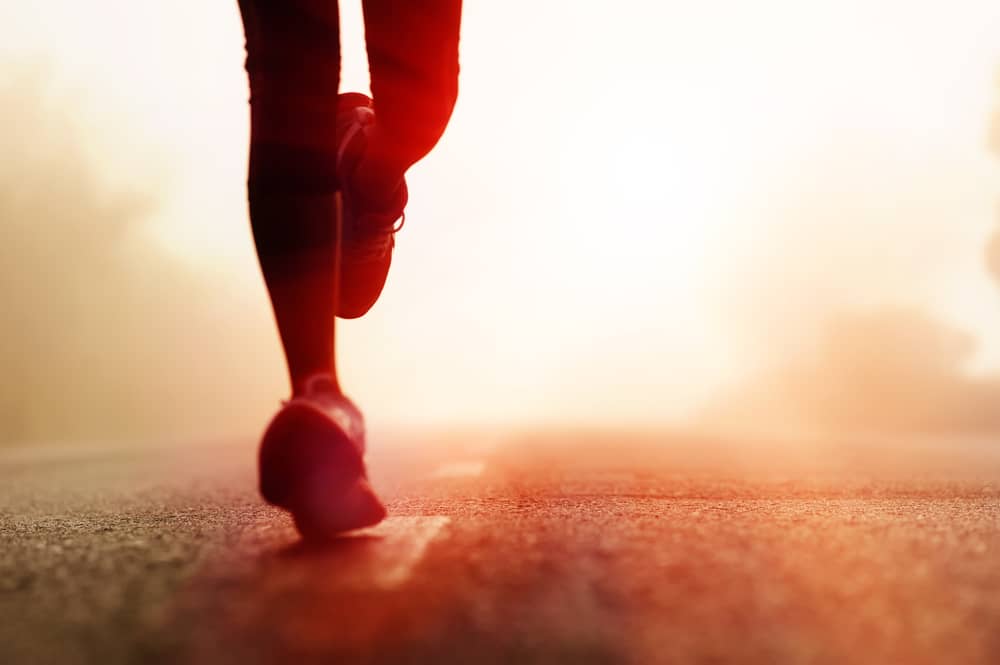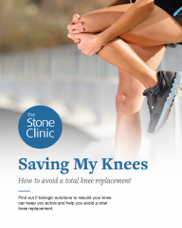Partial Knee Replacement for Athletes
Knees do not wear out evenly. In fact, they do not wear out at all—unless there is an underlying injury. This might be a meniscus or ligament tear, or the result of a disease such as osteoarthritis. The cartilage in the knee is extremely durable and, if not damaged, lasts a lifetime.

Once injury sets in, however, the wear pattern depends on the type and location of the injury. Many patients with arthritic knees are told they need a full knee replacement, when in fact resurfacing the worn-out part alone would do just fine.
In fact, 80% of the people told they need a total knee replacement do not need one. There are two other options. The first is a biologic replacement, where the meniscus is replaced, the ligaments reconstructed, or the articular cartilage repaired by a paste grafting technique. This is our specialized, biologic surgical reconstruction program called the BioKnee. However, if there is bone-on-bone on the x-ray, there is not enough space to replace the missing tissues with natural ones. In this setting an artificial partial knee replacement—also called unicondylar replacement is often the best option.
These partial replacements (actually resurfacings of the worn-out area) were not commonly performed in the past, as it was difficulty to accurately match the resurfaced parts to the uninjured knee. Computerized models and robotic arms have changed all that.
Today, with robotic assistance, we can resurface each part of the knee independently or in combination, on an outpatient basis. For example, it’s possible to resurface only the patella and trochlea (the top of the femur where the kneecap rubs) or only the medial or lateral (inside or outside) part of the knee. A combination of these resurfacings can also be performed.
The results of partial knee replacement have become so good that my patients often ask me, “Can I run, can I play sports, can I return to my full range of activities?” My answer is “Yes, but…” Here is why:
By the time many patients come in for resurfacing of the knee, they have limped for years. Their muscles are weak and their range of motion is limited, as their hip and back mechanics have compensated for the arthritic knee. In order to return to sports without damaging their knee joint, each of these limitations must first be addressed with extensive physical therapy and fitness training.
Let’s say you do return to running. If you walk a mile or run a mile, which exerts more force on the knee? It turns out that the total force can be the same, as you take fewer steps when running. Peak forces are higher with running, though. Therefore, if you are going to run on an injured, arthritic, or repaired knee, it makes sense to refine your running style. Shorter strides, mid-foot landings, and running on soft surfaces such as grass or sand, combined with smooth styles (such as Chi running) can lower the peak forces.
Hear Dr. Stone explain how partial knee replacements work for athletes
The most common question I’m asked next is, “Will I wear out or loosen my implant by sports?”
The answer is, “Not likely.” While loosening has many causes, we believe that one of the most frequent is weakening of the bone with aging and disuse. People have traditionally been told to limit their activities as they get older. Actually, by increasing weight training and loading of the joint, the bone mass increases—and the risk of loosening decreases. Nevertheless, even if things do go south, the plastic-based (high molecular weight polyethylene) inserts between the metal resurfacings are now replaceable if they wear out—though they rarely do. In fact, I have never seen one worn out from sports alone, though our marathon runners and triathletes keep trying to prove me wrong.
With modern outpatient robotic techniques, partial knee replacements and sports are now complimentary. But as with all activities, the quality of the motion affects the outcome.
Hear From Our Patients Who've Returned to Running
We have patients now running triathlons and (ultra)marathons, climbing mountains, skiing a hundred days a year on the replaced parts inside their knees. Below is the story of one of our most ambitious runners: Richard Donovan.
You may learn more about how our partial knee replacement program can help keep you running here.
You may not need an artificial knee replacement. Our BioKnee® program biologically reconstructs the knee joint without the use of artificial implants. Head here to learn about our alternative to knee replacement.


